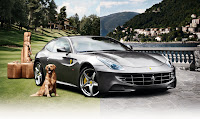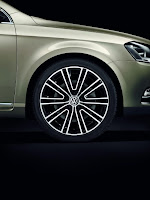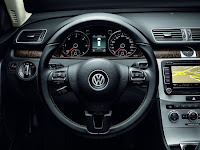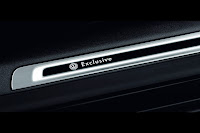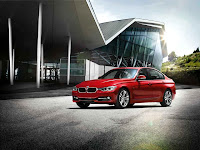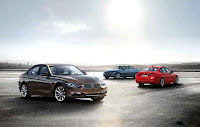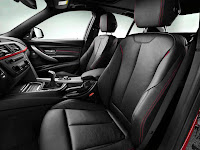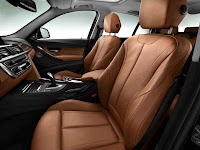
General Motors is counting on its revised portfolio of small cars to further increase its sales in North American, and at next week's SEMA aftermarket show in Las Vegas, the Detroit-based automaker will showcase the personalization possibilities for its sub-compact Chevrolet Sonic and the Cruze sedan with a plethora of concepts. For the time being, GM has shared some initial details on some of the concepts it will display in Las Vegas along with a handful of pictures of two customized Sonic hatchbacks.
Most of the prototypes will be wearing conceptual Z-Spec styling parts, which GM says are being evaluated for production. Chevrolet had also shown a Sonic Z-Spec Concept at the Detroit Motor Show earlier this year.
Both the Sonic and Cruze will also be featured in a so-called "Dusk" treatment, which GM says is a more subtle approach to tuning.
For more details on the initial batch of concepts, scroll down to read the information provided by GM in the press release.
[From GM Press Release]Sonic Z-Spec #1 – Designers took a turbocharged Sonic five-door and dressed it with concept Z-Spec accessories. They added Z-Spec ground effects, a spoiler, unique grille and graphics package – then finished it off with a Torch Red exterior and Z-Spec concept 18-inch wheels.
Inside, the Cobalt Red cabin features custom trim, including perforated black suede seat inserts, a Z-Spec sport pedal kit, sport shift knob and a racing-style flat-bottom steering wheel. Additional upgrades include performance brakes with four-piston calipers, a new high-flow exhaust system and performance suspension parts.
Sonic Z-Spec #2 – The next Sonic concept – in Flat White with Torch Red accents – builds on concept Z-Spec accessories with a more aggressive ground effects package, unique grille, rear spoiler and graphics package.
It rides on Z-Spec concept 18-inch wheels and also includes a re-trimmed interior with Z-Spec sport pedal kit, Z-Spec sport shift knob and a flat-bottom steering wheel.
It also features custom racing seats with the Z-Spec logo. The factory powertrain features the 1.4L turbo engine and six-speed manual transmission. Performance upgrades include brakes with four-piston calipers, a high-flow exhaust system and suspension parts.
Sonic Z-Spec 4D Concept – The more formal look of the Sonic sedan lends itself to a touring car-style motif, which this Ashen Grey Metallic concept picks up with concept Z-Spec ground effects, rear spoiler, grille, “Chevrolet” graphics and larger Z-Spec concept 18-inch wheels. As with its five-door counterparts, this Sonic features a re-trimmed interior – in Dark Titanium with Cobalt Red accents – Z-Spec sport pedal kit, aluminum sport shift knob and a flat-bottom steering wheel (trimmed with Cobalt Red suede).
The factory turbo 1.4L engine and six-speed manual transmission are complemented by performance upgrades that include four-piston caliper brakes, a high-flow exhaust system and suspension parts.
Sonic Dusk – The most subtle of the Sonic concepts is the Dusk. It features a Berlin Blue exterior, with a mild concept ground effects package, unique grille treatment and 18-inch concept wheels in dark Galvano Silver. Even the lights are tinted blue for a sophisticated statement.
The Mojave leather interior has custom seat inserts, Z-Spec shift knob with satin chrome trim, Z-Spec sport pedals and accessory interior trim kit. The Sonic Dusk also features a suede-trimmed, flat-bottom steering wheel, custom audio system and brake and suspension upgrades.
Chevrolet is keeping a few super-secret Sonics under wraps until the SEMA show, each representing an even higher level of performance and personalization.
Cool Cruzes
A pair of custom Cruze sedans demonstrates what is possible with conceptual accessories and a little creativity.
Cruze Z-Spec – Wearing concept Z-Spec ground effects, 18-inch custom wheels, an accessory spoiler and a high-flow grille, the Cruze Z-Spec has the looks and feel of a taut touring car. The exterior appearance of this Cruze is enhanced with a new stripe package that will be available soon, while on the inside are special seat inserts, a racing-style pedal kit, accessory shift knob and interior trim, as well as a new steering wheel.
Cruze Dusk – Complementing the Sonic Dusk concept, the Cruze Dusk suggests a more subtle and sophisticated approach to personalization, including a mild concept ground effects package, a unique grille treatment and dark-tinted wheels. The interior has custom seat inserts, along with an accessory shift knob, sport pedals, interior trim kit, a suede-trimmed steering wheel and a custom audio system.
PHOTO GALLERY









source:http://carscoop.blogspot.com/




























